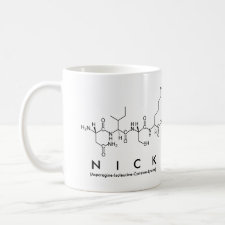
Authors: Turner NW, Holmes N, Brisbane C, McGeachie AB, Bowyer MC, McCluskey A, Holdsworth CI
Article Title: Effect of template on the formation of phase-inversed molecularly imprinted polymer thin films: an assessment.
Publication date: 2009
Journal: Soft Matter
Volume: 5
Issue: (19)
Page numbers: 3663-3671.
DOI: 10.1039/b902468a
Abstract: A range of molecularly imprinted polymer films (MIPFs) consisting of acrylonitrile (AN) as a matrix monomer, methacrylamide (MAM) as a functional monomer (96 : 4) for 2,4-dinitrotoluene (DNT) and 2,4,6-trinitrotoluene (TNT) were prepared using a phase inversion method with post polymerisation introduction of the template. The films exhibited no rebinding activity following template removal, prompting speculation of a collapse in the pore structure of the materials. Addition of extremely low concentrations of cross-linker (0.01% ethylene glycol dimethacrylate (EDGMA)) successfully stabilised the macroscopic structure of the films. The same approach was then applied to the preparation of conventionally imprinted films. The average molecular weight of the polymer chains in the MIPFs was found to decrease with increasing template concentration, confirming results from previous studies identifying TNT as a chain transfer agent. Failure to observe rebinding in the films in either the liquid or gas phases suggested that template removal precipitates irreversible changes in microscopic pore structure of the MIPFs. Thermogravimetric analysis (TGA) showed a proportionate loss in mass of the template from the non-extracted MIPFs, confirming the successful encapsulation of the template. Differential scanning calorimetry (DSC) measurements revealed distinct differences between the non-extracted films and the non-imprinted control polymer that become more exaggerated with the presence of increasing amounts of template in the MIPF formulation. Following template removal, the MIPF thermograms closely resembled the non-imprinted control, suggesting that template removal promotes changes in the MIPF microstructure consistent with the loss of template cavities and the formation of a more homogeneous structure.
Template and target information: 2,4-dinitrotoluene, DNT, 2,4,6-trinitrotoluene, TNT



Join the Society for Molecular Imprinting

New items RSS feed
Sign-up for e-mail updates:
Choose between receiving an occasional newsletter or more frequent e-mail alerts.
Click here to go to the sign-up page.
Is your name elemental or peptidic? Enter your name and find out by clicking either of the buttons below!
Other products you may like:
 MIPdatabase
MIPdatabase









